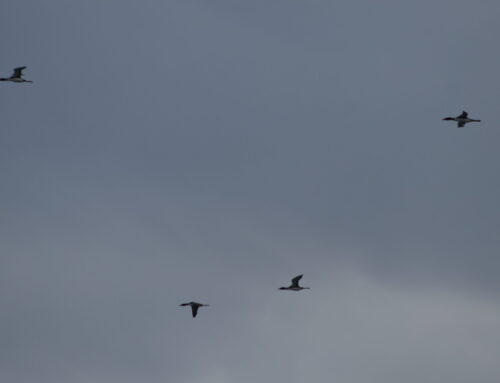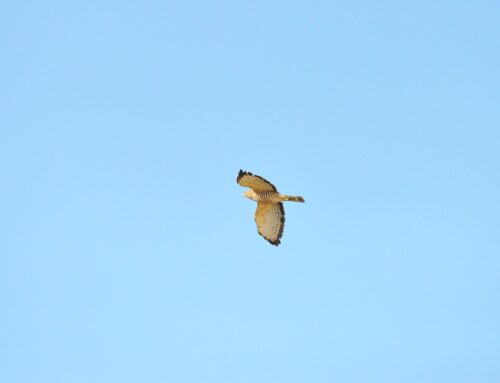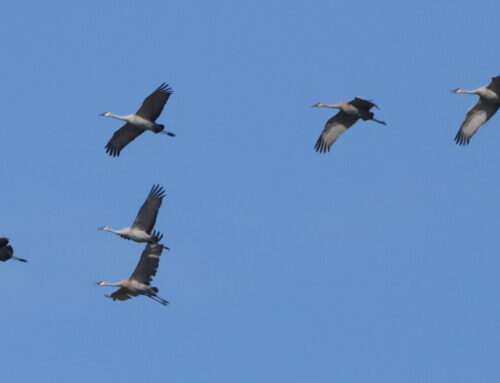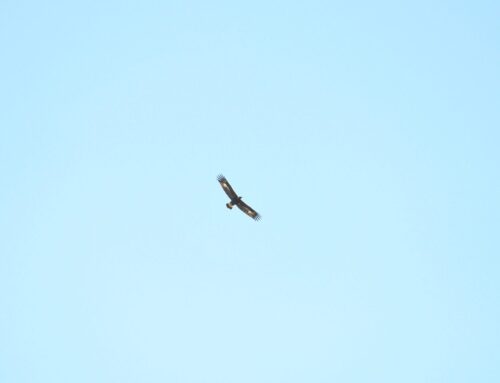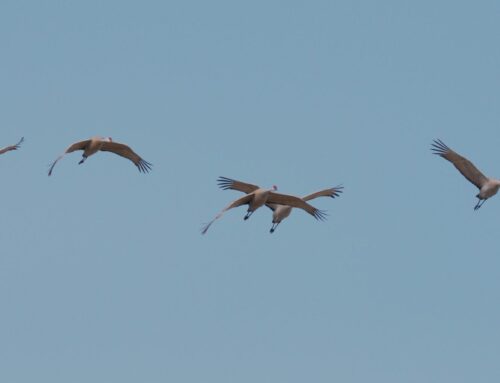At this latitude, May is a high-octane month. Night starts later, day begins sooner, and I think we all flounder a bit as we try to keep up with all we want to see. When dusk falls, Long-eared Owls rise from the pines near the Point and often, I fall victim to the urge to go look for them. But the waterbird count commences at NOAA sunrise–which comes earlier and earlier each day. This morning, May 8th, it was 6:14. That’s nearly 40 minutes earlier than the sunrise was April 15th, the first day of my count. May is, in short, a time of little sleep, but so many birds.
As it turns out, at Whitefish, May can also be a month with snow. Pure Michigan, right?! April 30th was a warm, sunny afternoon. U.S. Fish & Wildlife employees were demarcating the boundary of our Piping Plovers’ nesting areas, preparing for an imminent arrival. I was wearing just two layers–not three. But the next day, the first of May, was decidedly not warm and not sunny. Generally, days on the Point start with fantastic sunrises, but this morning was gray. The only color to be found was on the radar map: pinks, blues, and purples. It did not seem that Piping Plovers would be in this day’s forecast.
To be fair, I wasn’t sure if anything would be in the day’s forecast. Anything avian, that is, for the snow was beginning to swirl. And, it was not melting. My radio was unusually quiet, and I missed the camaraderie of comparing notes with the hawk counter. Sideways snow does not facilitate raptor migration, so the hawk count was on hold. Waterbirds, though, are less fickle about bad weather. They kept flying.
For the duration of the count, I posted up in the doorway of the shack, passing the time by eating the day’s ration of food (within the first two hours), rummaging through my multitude of pockets in pursuit of chapstick (and, during the process, finding several pens and a few quarters), and fondly reminiscing over each and every soup I’ve ever made. These reveries were interrupted by little bursts of activity: a flock of scaup here; a pair of loons there. I would dash out of the shack to scope them, then retreat–through a volley of sleet–back to the relative shelter of the shack.
Though the numbers of migrating birds recorded May 1st from the Waterbird Shack were, in comparison, low (250 individuals of 25 species, whereas Sunday, May 5th logged 2093 individuals of 83 species), the birds I saw were some of the season’s most satisfying. Not in terms of rarity, but more because they felt very, very earned. It does bear mention that the highlight of my day was not a bird: it was the moment our field ornithologist, Charlotte, emerged from the woods with a thermos of hot water! Thanks, Charlotte!
The birds (and, on a lesser scale, the conditions) have warmed considerably since May 1st. Common Loons are at the peak of their flight; an amazing 658 surged by the Point Sunday, May 5th. Good numbers of Greater Scaup and Red-necked Grebes continue to stream by; within the last week we have had several days where more than a hundred have been logged. White-winged Scoters and Bonaparte’s Gulls are beginning to be seen with more regularity and on the more uncommon side of things, Sunday, May 6, a Great Egret and 6 American White Pelicans flew by. It does bear mention that most these birds are seen during the first two hours of the count (and heat distortion is much less an issue then, too). The early bird(er) gets the…loons?
–Alison Vilag, 2019 WPBO Spring Waterbird Counter

Common Loon passes the Point in a snow flurry. Alison Vilag photo.



